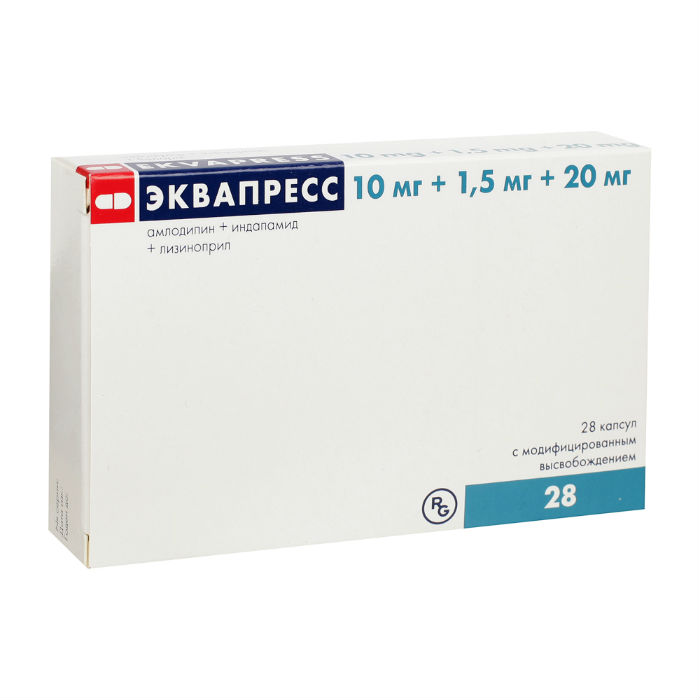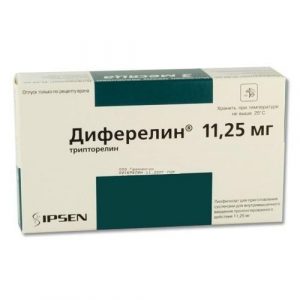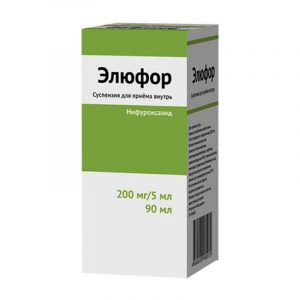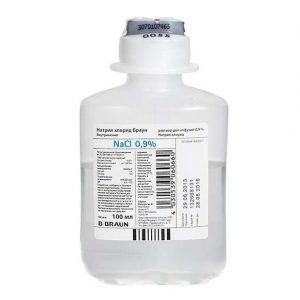Description
Pharmacological action
Equapress is a fixed combination of antihypertensive components of amlodipine, indapamide and lisinopril, which have complementary mechanisms of action to control blood pressure (BP), as well as synergistically have a cardioprotective effect.
The combination of amlodipine, indapamide and lisinopril prevents the possible development of side effects that occur when prescribing certain components of the drug. For example, by expanding arterioles, slow calcium channel blockers (BMKCs) can cause sodium and fluid retention in the body, which leads to the activation of the renin-angiotensin-aldosterone system (RAAS). An angiotensin-converting enzyme (ACE) inhibitor blocks this process and normalizes the body’s response to salt load.
ACE inhibitors significantly reduce diuretic hypokalemia.
Amlodipine
A derivative of dihydropyridine is a slow calcium channel blocker that has an antihypertensive and antianginal effect. It blocks slow calcium channels, reduces the transmembrane transition of calcium ions to the cell (more to the smooth muscle cells of blood vessels than to cardiomyocytes). The antianginal effect is due to the expansion of the coronary and peripheral arteries and arterioles:
– with angina pectoris it reduces the severity of myocardial ischemia by expanding peripheral arterioles, reduces the overall peripheral vascular resistance, reduces cardiac oxygen demand, reduces myocardial oxygen demand
– expanding coronary arteries and arterioles in unchanged and myocardial ischemic zones, increases oxygen supply to the myocardium (especially with vasospastic angina pectoris) prevents spasm of the coronary arteries (including caused by smoking).
In patients with stable angina, a single daily dose increases exercise tolerance, slows the development of angina attacks and ST segment depression by 1 mm, and reduces the frequency of angina attacks and consumption of nitroglycerin and other nitrates.
Has a long dose-dependent antihypertensive effect. The antihypertensive effect is due to a direct vasodilating effect on the smooth muscles of blood vessels. In case of arterial hypertension, a single dose provides a clinically significant decrease in blood pressure over 24 hours (lying and standing).
Orthostatic hypotension with amlodipine is rare. Amlodipine does not cause a decrease in exercise tolerance, left ventricular ejection fraction. Reduces the degree of left ventricular myocardial hypertrophy. It does not affect myocardial contractility and conductivity, does not cause a reflex increase in heart rate, inhibits platelet aggregation, increases glomerular filtration rate, and has a weak natriuretic effect.
In diabetic nephropathy does not increase the severity of microalbuminuria. It does not have any adverse effect on the metabolism and concentration of blood plasma lipids and can be used in the treatment of patients with bronchial asthma, diabetes mellitus and gout. A significant decrease in blood pressure is observed after 6-10 hours, the duration of the effect is 24 hours.
In patients with diseases of the cardiovascular system (including coronary atherosclerosis with damage to one vessel and up to stenosis of 3 or more arteries, carotid atherosclerosis) who have had myocardial infarction, percutaneous transluminal coronary angioplasty (PTCA), or in patients with angina pectoris the use of amlodipine prevents the development of thickening of the intima-media of the carotid arteries, reduces mortality from myocardial infarction, stroke, PTCA, aorto-coronary bypass surgery leads to a decrease in the number of hospitalizations for unstable hydrochloric progression of angina pectoris and congestive heart failure (CHF) reduces the frequency of interventions to restore coronary blood flow.
Does not increase the risk of death or the development of complications and deaths in patients with heart failure (III-IV functional class according to the classification of the New York Cardiology Association (NYHA)) during treatment with digoxin, diuretics and ACE inhibitors. In patients with heart failure (III-IV functional class according to NYHA classification) of non-ischemic etiology with the use of amlodipine, there is a possibility of pulmonary edema.
Indapamide
Indapamide is a sulfonamide derivative with an indole ring and is similar in pharmacological properties to thiazide diuretics that inhibit the absorption of sodium ions in the cortical segment of the nephron loop. At the same time, the excretion by the kidneys of sodium, chlorine ions and, to a lesser extent, potassium and magnesium ions increases, which is accompanied by an increase in diuresis and antihypertensive effect.
In clinical trials using indapamide in monotherapy in doses that do not have a pronounced diuretic effect, a 24-hour antihypertensive effect was demonstrated.
The antihypertensive activity of indapamide is associated with an improvement in the elastic properties of large arteries, and a decrease in arteriolar and total peripheral vascular resistance.
Indapamide reduces left ventricular hypertrophy.
Thiazide and thiazide-like diuretics at a certain dose reach a plateau of therapeutic effect, while the frequency of side effects continues to increase with a further increase in the dose of the drug. Therefore, you should not increase the dose of the drug if, when taking the recommended dose, the therapeutic effect is not achieved.
In the short term, Medium and long-term studies involving patients with arterial hypertension have shown that indapamide:
– does not affect lipid metabolism, including the concentration of triglycerides, cholesterol, low and high density lipoproteins
– does not affect carbohydrate metabolism, including in patients with diabetes mellitus.
Lisinopril
Lisinopril is an ACE inhibitor that inhibits the transformation of angiotensin I into angiotensin II. A decrease in the concentration of angiotensin II leads to a direct decrease in the secretion of aldosterone. Lisinopril inhibits the degradation of bradykinin and increases the synthesis of prostaglandins. Reduces total peripheral vascular resistance, blood pressure, preload and pressure in the pulmonary capillaries. In patients with heart failure increases the minute volume of blood and increases the resistance of the myocardium to stress.
Expands arteries more than veins. Some effects are explained by its effect on the tissue renin-angiotensin system. With prolonged use, hypertrophy of the myocardium and walls of the arteries of the resistive type decreases.
Lisinopril improves blood supply to the ischemic myocardium.
In patients with heart failure, ACE inhibitors increase life expectancy in patients with a history of myocardial infarction in the absence of clinical manifestations of heart failure, lisinopril slows the progression of left ventricular dysfunction.
In patients with CHF, lisinopril begins to act within 1 hour after ingestion. The maximum effect is achieved within 6-7 hours, the duration of the effect is 24 hours. In patients with arterial hypertension, the effect manifests itself during the first days after the start of treatment, the stabilization of the effect occurs within 1-2 months of treatment. Cases of marked increase in blood pressure after a sharp discontinuation of the drug are not registered.
Lisinopril provides both a decrease in blood pressure and a decrease in albuminuria. In patients with hyperglycemia, the drug helps to restore the function of the damaged glomerular endothelium. In patients with diabetes mellitus, lisinopril does not affect the plasma glucose concentration, taking the drug does not increase the incidence of hypoglycemia.
Indications
Arterial hypertension (patients requiring combination therapy).
Contraindications
– Hypersensitivity to amlodipine or other derivatives of dihydropyridine.
– Hypersensitivity to lisinopril or other ACE inhibitors.
– Hypersensitivity to indapamide or other sulfonamide derivatives.
– Hypersensitivity to the excipients of the drug.
– Severe arterial hypotension (systolic blood pressure below 90 mm Hg).
– Angioedema in the past, including those associated with the use of ACE inhibitors.
– Hereditary or idiopathic angioedema.
– Severe renal failure (creatinine clearance <30 ml / min). – Hepatic encephalopathy or severe hepatic impairment. – Hypokalemia. – Hemodynamically significant obstruction of the outflow tract of the left ventricle (for example, with severe aortic stenosis, hypertrophic obstructive cardiomyopathy), hemodynamically significant mitral stenosis. – Hemodynamically unstable heart failure after myocardial infarction. – Shock (including cardiogenic). – Unstable angina (with the exception of Prinzmetal angina). – The simultaneous use of Equapress and preparations containing aliskiren in patients with diabetes mellitus and / or moderate or severe impaired renal function (glomerular filtration rate (GFR) less than 60 ml / min / 1.73 m2 of body surface area). – Concomitant use with angiotensin II receptor antagonists (ARA II) in patients with diabetic nephropathy. – Pregnancy and breastfeeding. – Age under 18 years of age (efficacy and safety not established). – Hereditary lactose intolerance, galactosemia, glucose-galactose malabsorption syndrome. Ingredients Active ingredients: amlodipine besilate – 13.868 mg (equivalent to amlodipine 10 mg), indapamide – 1.5 mg, of lisinopril dihydrate – 21.776 mg (equivalent to lisinopril 20 mg). Excipients: lactose monohydrate, hypromellose, calcium hydrogen phosphate dihydrate, mannitol, corn starch, microcrystalline cellulose, croscarmellose sodium, talc, magnesium stearate, colloidal silicon dioxide, Opadry II white (contains: polyvinyl alcohol, titanium dioxide, macrogol-3350, talc), hard gelatin capsule (contains: iron dye yellow oxide, titanium dioxide, water, gelatin) Dosage and administration of Dosage and administration of Equapress is taken orally, regardless of food intake. Doses Fixed-dose combination drugs are not recommended for initial therapy. Equapress is prescribed for adult patients who have achieved adequate control of blood pressure while taking lisinopril, amlodipine and indapamide, which the patient takes at the same time as the combined dose: amlodipine 5 mg, indapamide 1.5 mg, lisinopril 10 mg ( Equapress 5 mg + 1.5 mg + 10 mg), amlodipine 10 mg, indapamide 1.5 mg, lisinopril 20 mg (Equapress 10 mg + 1.5 mg + 20 mg), amlodipine 5 mg, indapamide 1.5 mg, lisinopril 20 mg (Equapress 5 mg + 1.5 mg + 20 mg). The recommended dose is 1 capsule per day, preferably in the morning, at the same time every day. The maximum daily dose is 1 capsule. With the development of symptomatic arterial hypotension at the beginning of treatment with Equapress, the patient should lie on his back, stop taking the drug and consult a doctor. Transient arterial hypotension usually does not require discontinuation of the drug, however, the need to reduce the dose should be assessed. If dose selection is necessary, amlodipine, indapamide and lisinopril should be used separately. Skipping If you forget to take the Equapress capsule, take the next dose at the usual time. Do not take two capsules at the same time to reimburse the missed dose. Special patient groups Patients with renal failure During therapy with Equapress, renal function, as well as potassium and sodium in blood serum should be monitored. If kidney function worsens, Equapress should be discontinued and replaced with individually selected therapy from the individual components. Patients with hepatic insufficiency In patients with impaired hepatic function, amlodipine may be slowed down. For such cases, exact recommendations are not available, therefore, Equapress should be used with caution in these patients. Children and adolescents (<18 years old) Safety and efficacy of Equapress in children and adolescents have not been established. Elderly patients (> 65 years of age)
This drug should be used with caution in elderly patients.
It is necessary to control the concentration of creatinine in blood plasma in accordance with age, body weight and gender.
In clinical studies, no age-dependent changes in the efficacy and safety profile of amlodipine or lisinopril were detected.
Side effects
The most common adverse reactions reported with amlodipine, indapamide and lisinopril as monotherapy were dizziness, headache, drowsiness, visual impairment, tinnitus, palpitations, flushing of the face, and decreased blood pressure (and hypotension-related effects), coughing, shortness of breath, gastrointestinal upsets (abdominal pain, constipation, diarrhea, nausea, dyspepsia, vomiting), maculopapular rash, muscle cramps, swelling in the ankles, asthenia, swelling and mouth spine.
The following adverse drug reactions (NLR) have been reported during the separate use of amlodipine – 1, indapamide – 2 and lisinopril – 3.
The frequency is determined as follows:
Very often – 1/10 of the prescription ( 10%).
Often – 1/100 appointments ( 1% and <10%). Infrequently – 1/1000 appointments ( 0.1% and <1%). Rarely – 1/10000 appointments ( 0.01% and <0.1%). Very rarely – less than 1/10000 appointments (<0.01%). Frequency unknown (frequency cannot be estimated based on available data). Within each frequency group, unwanted reactions are presented in decreasing order of importance. Disorders of the blood and lymphatic system decreased hemoglobin3 (rare), decreased hematocrit3 (rare), inhibition of bone marrow hematopoiesis3 (very rare), leukopenia1,2,3 (very rare), thrombocytopenia1,2,3 (very rare) , agranulocytosis2.3 (very rare), aplastic anemia2 (very rare), hemolytic anemia2.3 (very rare), neutropenia3 (very rare), anemia3 (very rare), lymphadenopathy3 (very rare). Immune system disorders allergic reactions1 (very rare), autoimmune disorders3 (very rare). Disorders of the endocrine system syndrome of inadequate secretion of antidiuretic hormone 3 (rare). Metabolic and nutritional disorders hyperglycemia1 (very rare), hypoglycemia3 (very rare), hypercalcemia2 (very rare), decreased potassium and the development of hypokalemia2 (frequency unknown), especially significant for patients at risk of hyponatremia2 (frequency unknown). Mental disorders mood lability1.3 (infrequently), sleep disturbance3 (infrequently), hallucinations3 (infrequently), insomnia1 (infrequently), anxiety1 (infrequently), depression1 (infrequently), 3 (frequency unknown), confusion1.3 (rarely ) Nervous system disorders dizziness1.3 (often), headache1.3 (often), 2 (rare), drowsiness1 (often), fatigue2 (rare), vertigo2 (rare), 3 (infrequently), paresthesia2 ( rarely), 1.3 (infrequently), dysgeusia 1.3 (infrequently), fainting 1 (infrequently), 2.3 (frequency unknown), tremor1 (infrequently), hypesthesia1 (infrequently), parosmia (sense of smell) 3 (rarely) , muscle hypertonicity1 (very rare), peripheral neuropathy1 (very rare), extrapyramidal disorders1 (frequency unknown). Visual disturbances visual impairment (including diplopia) 1 (often), 2 (frequency unknown), myopia2 (frequency unknown), blurred vision2 (frequency unknown). Impaired hearing and balance tinnitus1 (infrequently). Heart abnormalities palpitations1 (often), 3 (infrequently), myocardial infarction3 (infrequently), 1 (very rare), tachycardia3 (infrequently), ventricular tachycardia 1 (infrequently), arrhythmia1 (infrequently), 2 (very rare), polymorphic ventricular tachycardia of the pirouette type (potentially fatal) 2 (frequency unknown ), bradycardia1 (infrequently), atrial fibrillation 1 (infrequently). Vascular disorders orthostatic hypotension and related symptoms 3 (often), flushing of the face 1 (often), acute cerebrovascular accident 3 (infrequently) (due to a marked decrease in blood pressure in high-risk patient groups), Raynaud’s syndrome 3 (infrequently) , vasculitis 1 (very rare), hypotension 1 (infrequently), a marked decrease in blood pressure (very rarely). Disorders of the respiratory system, chest and mediastinal organs shortness of breath1 (often), cough1 (infrequently), 3 (often), rhinitis1.3 (infrequently), bronchospasm3 (very rare), allergic alveolitis3 (very rare), eosinophilic pneumonia3 (very rare), sinusitis3 (very rare). Disorders of the gastrointestinal tract abdominal pain1 (often), 3 (infrequently), nausea1 (often), 2 (rarely), 3 (infrequently), dyspepsia1 (often), 3 (infrequently), change in defecation rhythm1 ( often), diarrhea1,3 (often), constipation1 (often), 2 (rare), vomiting1,2 (infrequently), 3 (often), dry mouth1 (infrequently), 2,3 (rare), pancreatitis1,2, 3 (very rare), gastritis1 (very rare), interstitial angioneurotic OTEC3 (very rare), gingival hyperplasia1 (very rare). Hepatic and biliary tract disorders hepatitis 1 (very rare), 2 (frequency unknown), hepatitis (including hepatic or cholestatic) 3 (very rare), jaundice 1.3 (very rare), liver failure 3 (very rare) , possible development of hepatic encephalopathy in case of liver failure2 (frequency unknown), impaired liver function2 (very rare), increased activity of liver enzymes * 1 (very rare). (* – mainly due to cholestasis) Disorders of the skin and subcutaneous tissues alopecia 1 (infrequently), 3 (rare), hypersensitivity reactions2 (often), maculopapular rash2 (often), exanthema1 (infrequently), purple 1 , 2 (infrequently), skin depigmentation1 (infrequently), hyperhidrosis1 (infrequently), 3 (very rare), pruritus1.3 (infrequently), rash1.3 (infrequently), urticaria1 (infrequently), 2 (very rarely), 3 (rare), Psoriasis3 (rare), erythema multiforme1.3 (very rare), angioedema1.2 (very rare), 3 (rare), exfoliative dermatitis1 (very rare), toxic epidemic Mallnow nekroliz2,3 (very rare), Stevens-Dzhonsona1,2 syndrome, 3 (very rare), Quincke edema1 (very rare), photosensitivity1 (very rare), 2 (frequency unknown), pemphigus vulgaris3 (very rare), benign skin lymphadenosis * 3 (very rare), exacerbation of an existing acute systemic lupus erythematosus2 ( frequency unknown), hypersensitivity / angioedema of the face, arms and legs, lips, tongue, glottis and / or larynx 3 (rarely). (* – a symptom complex has been reported that may include one or more of the following symptoms: fever, vasculitis, myalgia, arthralgia / arthritis, positive reaction to antinuclear antibodies (ANA), increased erythrocyte sedimentation rate (ESR), eosinophilia and leukocytosis, cutaneous rash, photosensitivity or other changes in the skin). Musculoskeletal and connective tissue disorders muscle cramps1 (often), swelling in the ankles1 (often), arthralgia1 (infrequently), myalgia1 (infrequently), back pain1 (infrequently). Renal and urinary tract disorders impaired renal function3 (often), urination disorder1 (infrequently), nocturia1 (infrequently), rapid urination1 (infrequently), acute renal failure1 (rare), renal failure2 (very rare), uremia ), oliguria3 (very rare), anuria3 (very rare). Disorders of the genitals and mammary gland gynecomastia1 (infrequently), 3 (rarely), impotence1.3 (infrequently). General disorders and disorders at the injection site edema1 (very common), fatigue 1 (common), 3 (rare), asthenia 1 (common), 3 (rare), chest pain1 (rare), pain1 (rare) , malaise1 (infrequently). Effect on laboratory and instrumental studies: increased creatinine and urea concentration3 (infrequently), hyperkalemia3 (infrequently), hyperbilirubinemia3 (rare), increased activity of liver enzymes2 (frequency unknown), 3 (infrequently), hyponatremia3 (rare), prolonged interval QT on ECG2 (frequency unknown), increased concentration of uric acid2 (frequency unknown), increased concentration of glucose in the blood2 (frequency unknown), decreased or increased body weight1 (infrequently). If any of the side effects listed in the instructions are aggravated, or you notice any other side effects not listed in the instructions, notify your doctor. Overdose of Overdose of amlodipine Symptoms: a significant decrease in blood pressure with the possible development of reflex tachycardia and excessive peripheral vasodilation (there is a risk of significant and persistent hypotension, with the development of shock and death). Treatment: gastric lavage, administration of activated carbon (especially during the first 2 hours after an overdose), giving the patient a horizontal position with raised lower limbs, active support of the cardiovascular system, monitoring indicators of heart and lung function, controlling the volume of circulating blood and urine output. In the absence of contraindications, vasoconstrictors may be appropriate to restore vascular tone and blood pressure. Intravenous injections of calcium gluconate can help to stop the effects of calcium channel blockade. Since amlodipine largely binds to serum proteins, hemodialysis is ineffective in treating an overdose of amlodipine. Overdose of indapamide No toxic effects of indapamide have been observed with an overdose even in very high doses (up to 40 mg, i.e. 27 times the therapeutic dose). Signs of acute indapamide poisoning are primarily associated with a violation of the water-electrolyte balance (hyponatremia, hypokalemia). Clinical symptoms of an overdose can include nausea, vomiting, decreased blood pressure, cramps, dizziness, drowsiness, confusion, polyuria or oliguria, leading to anuria (due to hypovolemia). Emergency care measures include removing the drug from the body, washing the stomach and / or taking activated charcoal to restore water-electrolyte balance. Overdose of lisinopril Symptoms: a significant decrease in blood pressure, dry mouth, drowsiness, urinary retention, constipation, anxiety, and irritability. Treatment: symptomatic therapy, intravenous administration of 0.9% sodium chloride solution and, if possible, vasopressors, blood pressure control, control of water-electrolyte balance. Perhaps hemodialysis. Storage conditions At a temperature not exceeding 25 ° C. Keep out of the reach of children. Expiration 2 years. Do not use after the expiration date printed on the package. uyuschee substances amlodipine, indapamide, lisinopril Terms of dispatch from pharmacies Prescription




